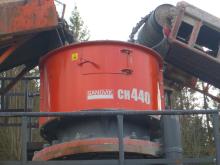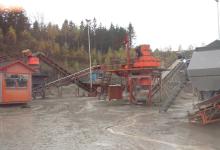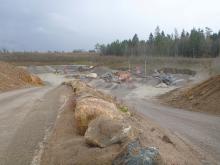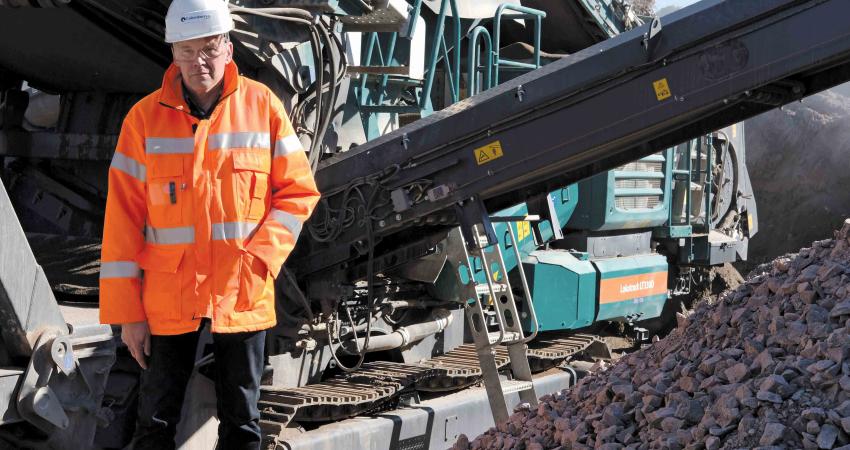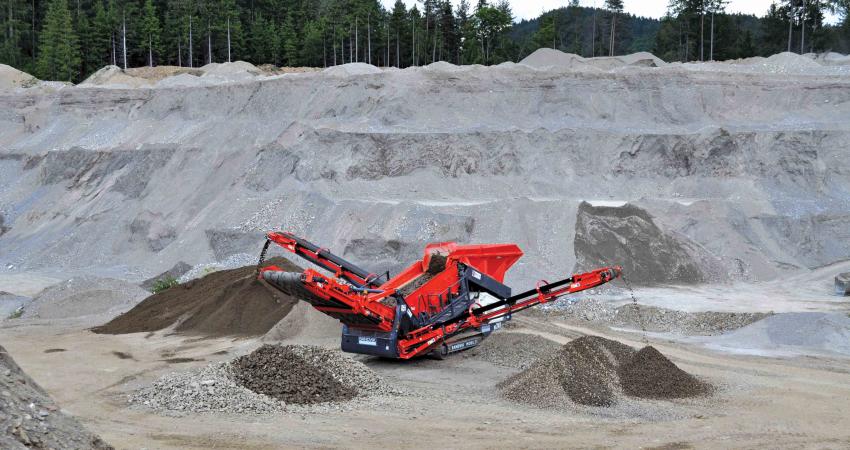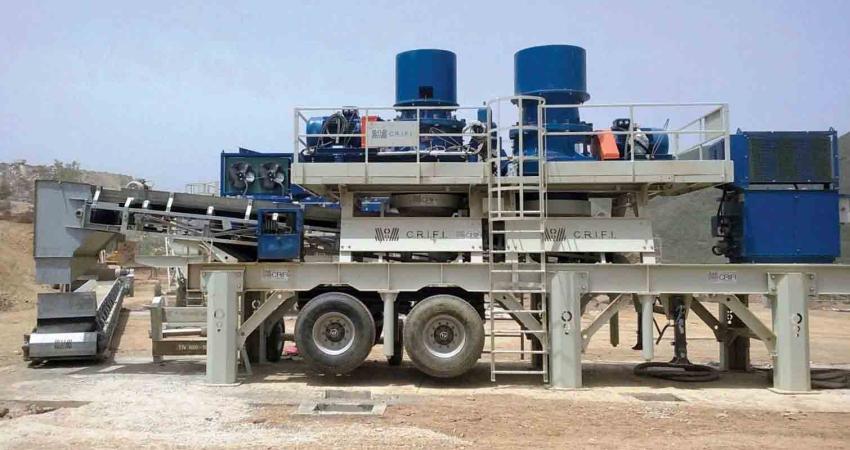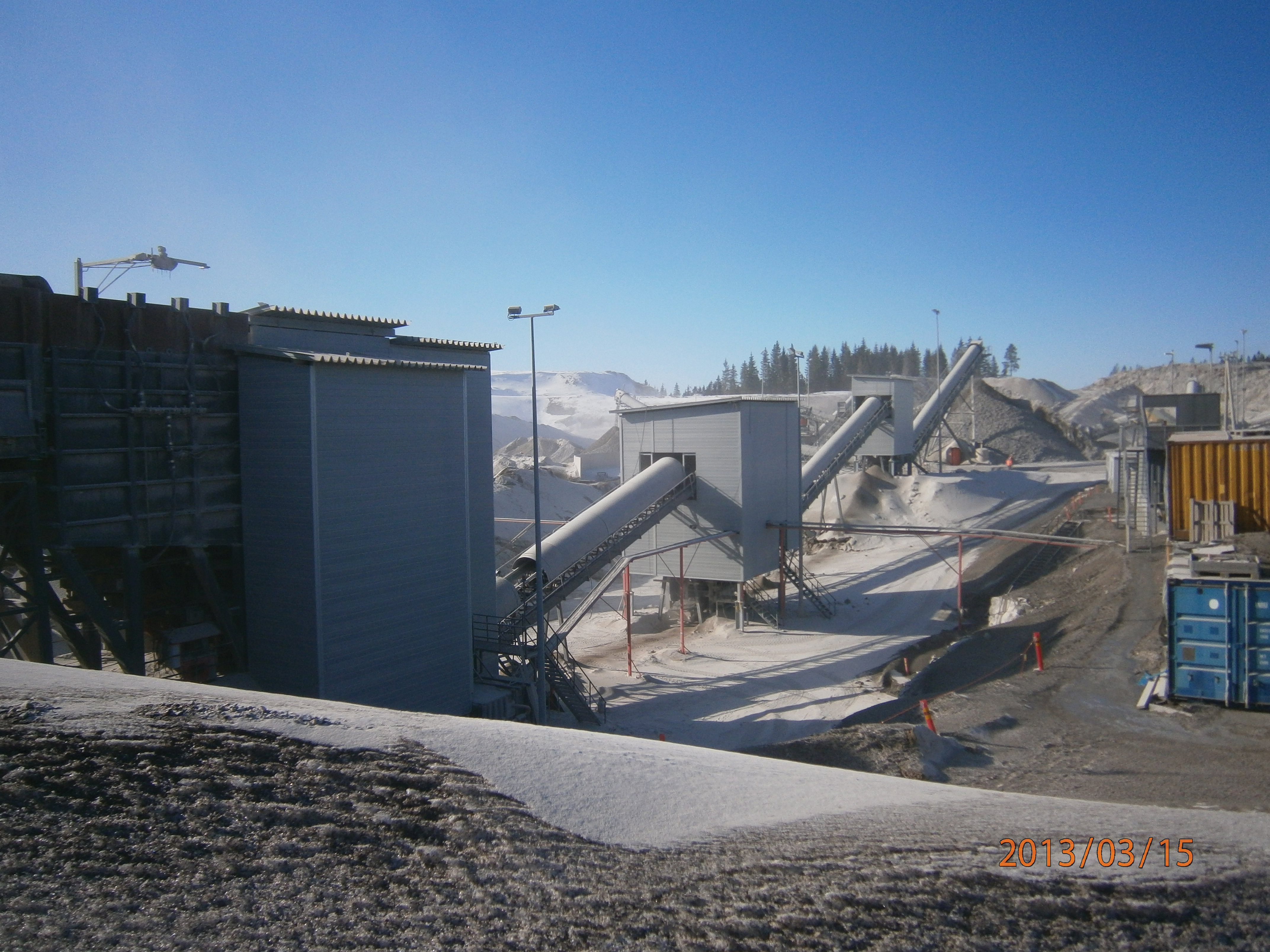
For the third year in a row the Seepsula rock factory has won a major safety competition. The Finnish company, which has its headquarters in Tuusula just north of the capital Helsinki, picked up the award in the Infra-organised safety competition.
The business, which supplies rock products over a wide area, is also eager to safeguard the environment and in 2012 in published its sustainability report.
Seepsula’s state-of-the-art crushing plant is in Senkkeri near the Helsinki-Vantaa Airport, and is designed to focus on environmental and occupational safety issues through the use of the latest developments.
The high-tech plant was built in close cooperation with
A family business with over 40 years of experience, Seepsula has operated an aggregate plant for around 20 years at its current location some 20km from the centre of Helsinki.
“The 300-hectare site is excellent from a logistics point of view, and possesses enough materials to be able to supply aggregates to the Helsinki metropolitan area for approximately 100 years,” says the company.
The first complete crushing plant was acquired in 2003, and the current four-stage crushing plant, with an average capacity of 600tonnes/hour, was supplied by Sandvik and was taken into use in 2008.
In 2009, in order to improve the operational effectiveness of the aggregate plant, two Sandvik CH440 cone crushers were added to the plant. These crushers are fed from under the grizzly section of the existing primary crusher’s feeder, and at the same time three additional product conveyors were installed for dividing the feed material and products.
Due to the installation of the new equipment the aggregate plant’s production capacity may be increased as demand requires it.
Seepsula feels that cornerstones of its operation are high quality, reliability, prompt delivery and consideration of environmental issues.
Environmental and occupational safety issues were taken into consideration in the acquisition phase, and the plant is among the forerunners in noise abatement and dust suppression.
“We want to stay in the forefront of development in the future too and that is why we constantly develop our environmental technologies,” says Seepsula’s development director Karl Sjöblom.
Several large investments have been carried out at the Senkkeri crushing plant to abate noise and dust, even though the plant already remains below the set noise limits.
“Year 2010, we constructed a noise abatement building around the primary crusher, which resulted in a 10decibel drop in the noise level and the rubber lining added to the secondary crusher further reduced the noise by 6decibels,” says Sjöblom.
“Year 2012, we constructed a noise abatement building also to the secondary cone crusher and free-fall screen. Now, if people are standing at the edge of the pit, the noise coming from our plant blends in with the background noise.”
It is not just the operation of the aggregate plant itself that has been monitored, and noise emissions reduced: the environmental impact from blasting operations for the granite rock has also received attention.
Sjöblom expands on the problem and the solution arrived at.
“Vibrations [resulting from blasting for materials] are closely scrutinised and on average they have been less than 10% of the permitted values, with vibration from other sources being often more that those caused by our blasting operations. That said, we are still looking to minimise vibrations by optimising the hole size and spacing, and we will take into use new noise abatement solutions for our breaking and drilling equipment.”
Seepsula points out that even in dry weather there are no heavy dust clouds floating around the Senkkeri crushing plant. The dust issue was addressed during the construction of the plant with all conveyors, for example, being encapsulated, and all screens being covered.
The sprinkling system covers all dust-emitting areas of the plant, and Seepsula has been so successful in combating these emissions that contamination levels have remained below those demanded by the local authorities.
That said, the aim is to go even further in reducing emission levels, with a major part being played in this goal by a new water dampening system.
The pressure sprinkling system installed at the primary crusher’s feed hopper represents the latest development in dust suppression. When the truck is tipping stones to the feed hopper, the high-pressure sprinkling system is automatically switched on. The water is fed through the mainline at a pressure of 160bars and the pressure at the nozzles is reduced to 120–140bars.
The high pressure makes the water droplets very small, thereby ensuring highly efficient dust suppression, while at the same time using as little water as possible.
The water used for dust suppression is clean water coming from the plant’s own bored well. Thanks to a well-insulated and heatable main pipeline and heatable nozzles, the system can also be used in sub-zero temperatures, even though the water is not pre-heated.
The system was tested and there were no problems reported even during exceptionally cold weather.
Seepsula says the experiences gained from the new sprinkling system were very positive and the high-pressure system was extended to cover the other areas of the plant that were using conventional low-pressure sprinkling systems.
In addition to efficiency, the advantages of high-pressure sprinkling include reduced water consumption and the possibility to use the system in sub-zero temperatures. Seepsula has developed the system in cooperation with Sandvik.
While it is easy to make grand claims regarding achievements, and environmental credentials, this proves not to be the case with regards to Seepsula.
The annual occupational safety competition organised by Infra, the Association of Finnish Entrepreneurs and Companies involved in the construction and asphalt sectors, bears testimony to Seepsula’s commitment to occupational safety issues. During recent years Seepsula has been ranked among the highest positions, and won the competition in 2010, 2011 and 2012 as the company achieved the highest total score.
Seepsula says that this point shows that with the practical know-how of a company such as it is, and combined with the latest technology then not only does production capacity increase, but the environmental footprint is reduced at the same time.
With some 70 employees (including sub-contractors), Seepsula’s crushing plant has an average capacity of 600tonnes/hour.
After blasting the granite, the rock is loaded and hauled to the crushing operation.
Here material is produced in a wide variety of sizes and for a wide variety of uses.
Seepsula’s product range includes all rock and gravel aggregates, asphalt aggregates, concrete aggregates, washed-out fractions, playground sands, sanding chippings, soil filtration chippings, and products for planting arrangements, including mull.
Seepsula produces fractions of 0-3mm, 3-5mm, 3-6mm, 5-16mm, 6-16mm, 16-30mm and 0-16mm, 0-31mm, 0-56mm, 0-100mm and 0-150mm, which is used in the construction sector.


![Seepsula’s Senkkeri quarry produces granite rock and sand products 6am-10pm five-days-a-week [pic: Glen J Nelson Photography] Seepsula’s Senkkeri quarry at night](/sites/agg/files/styles/medium/public/126135.jpg?itok=oo-Kc4Rw)


